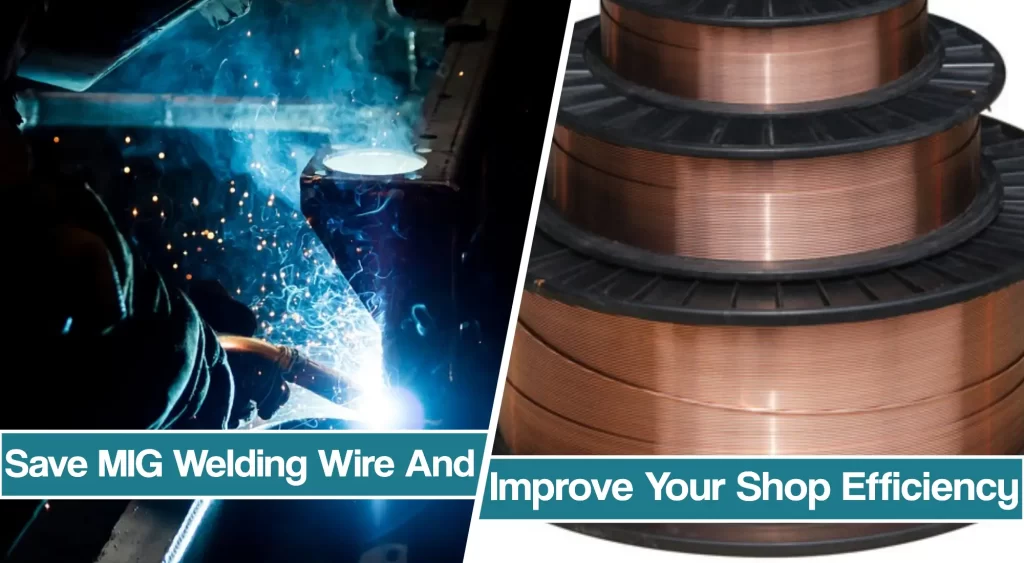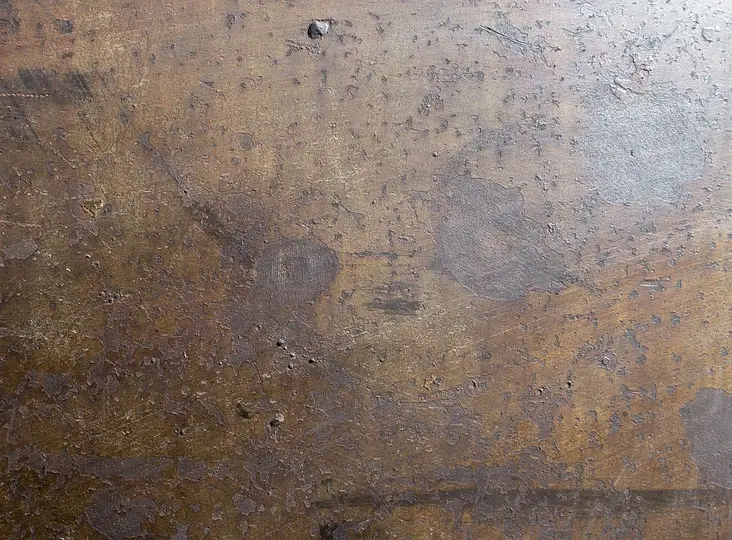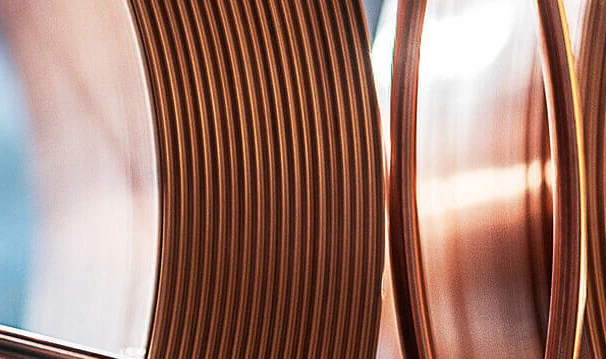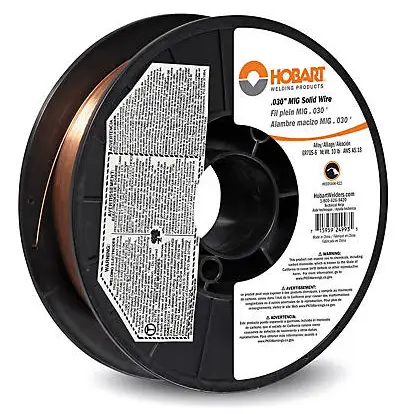Saving nickels and dimes in the fabrication process puts dollars on the bottom line, according to accountants, but often, saving a dime on welding wire adds dollars to production time, according to welders.
Whether welders are using truck mounted equipment in the field, or welding engineers are supervising a shop full of robots, running quality engineered GMAW wire pays dividends in less downtime, more consistent welds, and far less aggravation by the end of the day.

How To Improve MIG Welding Wire Use Efficiency
A simple survey of solid wire issues gives clues to improving GMAW welding. Look at such variables as feedability, arc starts, and pre-welding and post-welding work, then determine how many of those factors relate to the wire.
An inferior wire could require operations such as cutting, forming, surface and joint preparation, pre-heating, cleaning, tacking, grinding and painting. Each of those operations can be very costly.
Meanwhile, welding wire may contribute only four percent to the actual cost of welding. So, saving on the price of wire could result in productivity-robbing activities and higher overall costs.

In some shops, choosing the correct wire for a given application may eliminate pre-welding operations. With robotics, a quality GMAW wire improves accuracy in wire placement and consistency in the weld, and helps to minimize rework.
Also, the use of high strength low alloy (HSLA) steels and advanced high strength steel (AHSS) calls for matching the wire so that the specified yield and tensile strengths of the weld metal are equal to or higher than the specified properties of the base metal.
Low Quality vs. High-Quality MIG Welding Wires
Operators and supervisors who use an engineered wire product notice differences in weld performances. Premium wire products often provide consistent arc length and wet in, while reducing spatter, and sharply reducing the need to adjust settings during the welding process.
This consistent performance is more pronounced with pulsed GMAW because that process uses more sophisticated equipment and has rapid changes in current that can cause problems when a lower quality wire is used.
MIG Wire Diameter Quality Control
Quality control in wire manufacturing eliminates a number of problems in welding. For example: Consistent diameter in a properly engineered wire ensures that the current will pass correctly from the contact tip to the wire.
Undersized wire causes arcing between the wire and the inside diameter of the tip, and that erodes the inner diameter of the tip and eventually fuses the tip to the wire.

Oversized wire requires excessive feeding force and causes tip blockage, wire slippage and downtime. A worn gun tip can cause an erratic arc because random electrical connections can occur.
The gun tip should be perfectly round and just a few thousandths of an inch larger than the wire.
Some wire feeding issues are caused by poor quality wire or by machine adjustments. For example, a build up of debris on the inlet and outlet near the feeder wheels can come from dirty wire, bits of copper flashing, or a misaligned feeding system.
With consistent quality wire, operators and weld engineers will more likely be able to set and forget their procedures, rather than re-adjusting to accommodate low quality wire.
Also, a premium wire with a consistent chemical composition provides a more consistent performance and greater, more stable quality control of the weld.
Bird Nesting Wire Issue
A “birds nest” of wire in the drive wheel area may result from soft wire or if the drive tension is too high (a quick check for tension: pinch the wire at the gun tip. If it stops, increase the tension). The wire must flow smoothly, or the voltage starts to vary, and the arc length changes.
Selecting The Right MIG Welding Electrode
GMAW is a two-component welding process that requires shielding gas and electrode consumables, and the combinations of both electrodes and gases must be taken into account when making comparisons.
For example, a more expensive MIG shielding gas, with a less expensive electrode, may or may not be more economical than a low-cost gas and more expensive electrode.
The gas selection can also affect mechanical properties, such as increasing or decreasing the Charpy V-Notch properties of the deposit.
The correct electrode should lower the overall cost of welding. Often, the lowest cost electrode does not lead to the lowest production cost.

The AWS classification A5.18, Specification for Carbon Steel Filler Metals for Gas Shielded Arc Welding, and AWS A5.28, Specification for Low Alloy Steel Filler Metals for Gas Shielded Arc Welding, provide general requirements for GMAW consumables: chemical composition, mechanical properties, solid wire diameters, and packaging requirements.
Two commonly used solid wires are ER70S-3 and ER70S-6 for welding mild steel. The ER70S-3 electrode contains medium levels of silicon and manganese. The ER70S-6 electrode, containing high levels of silicon and manganese deoxidizers, is best suited for welding on base materials with moderate to high levels of mill scale. You can find our recommendations for the high quality MIG welding wires available today in our buying guide here.
MIG Wire Chemical Composition
Using the wrong chemical composition in a solid steel wire electrode is like trying to bake bread with a pie recipe. Welding engineers chose chemical composition to match the application.
Each of the following chemicals plays a role in producing a good weld:
- Carbon (C), a critical element in GMAW solid wire electrodes, is added in precise amounts to provide strength and ductility in the weldment.
- Manganese (Mn) also adds strength to the weld and acts as a deoxidizer. Higher levels of manganese promote weld puddle fluidity.
- Silicon (Si) also works as a deoxidizer. Higher levels of silicon in the metal generally create a more fluid weld puddle. Additions of silicon increase tensile and yield strength.
- Phosphorus (P) levels are restricted by AWS because it can contribute to weld cracking.
- Sulfur (S) is also restricted by AWS because it effects weldability and can contribute-to weld cracking. However, in limited amounts, it improves fluidity and wetting.
- Copper (Cu) is found in solid wire electrodes, however, the majority of the copper comes from the coating of the wire electrode (if copper-coated). AWS limits surface copper as well as total copper in the finished product. Benefits of copper coating include better conductivity, and therefore, better arc starts, and longer contact tip life.
- Titanium (Ti) is found in ER70S-2 as a deoxidizer.
- Zirconium (Zr), Aluminum (Al), Nickel (Ni) are found in ER70S-2 as deoxidizers to remove oxygen and nitrogen from the weld, reducing the occurrence of weld metal porosity.
- Molybdenum (Mo) is added to many low alloy GMAW electrodes for strength and improved impact properties, even when the weld is subject to stress relieving post-weld heat treatment.
- Chromium (Cr) is added to some low alloy wires for corrosion resistance. It is also a primary element found in stainless steel wire electrodes.
American Welding Society GMAW Electrode Standards
The AWS has established manufacturing specifications and acceptance standards for GMAW electrodes, and manufacturers should provide proof that they made their wires to those standards.
The AWS standards cover many qualities in wire, including cast and helix, which are key properties for the way the wire is wound on a spool, and packaging, and those standards are available from the AWS.
This checklist helps in selecting the correct GMAW wire:
- Determine the mechanical property requirement, primarily the yield and tensile strength, and Charpy V-Notch specified in contract documents or in applicable codes, and compare filler metals to the requirements.
- Determine the weld-deposit chemistry requirements.
- Evaluate the production conditions such as mill scale, rust, and other surface contaminants.
- Determine final weld appearance requirements.
- Determine the appropriate electrode diameter. GMAW wires range in diameter from 0.023- to 1/16-in.
The AWS uses an alphanumerical system for GMAW wire classification.
- Each letter and number of the AWS classification ER70S-3 represents a specific defining characteristic.
- The “E” stands for electrode, the current carrying device.
- The “R” stands for rod, meaning that the electrode can also be used as a filler rod for gas-tungsten-arc-welding applications.
- The number “70” indicates the minimum as-welded tensile strength measure in thousands of pounds per square inch (ksi).
- The “S” refers to a solid electrode wire.
- The “3” refers to the level of specific alloy deoxidizer in the chemical composition.





